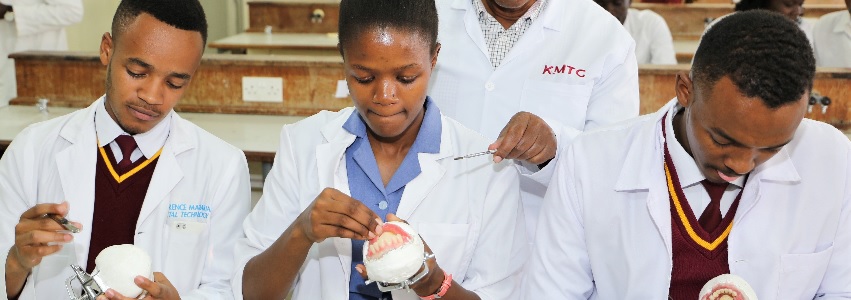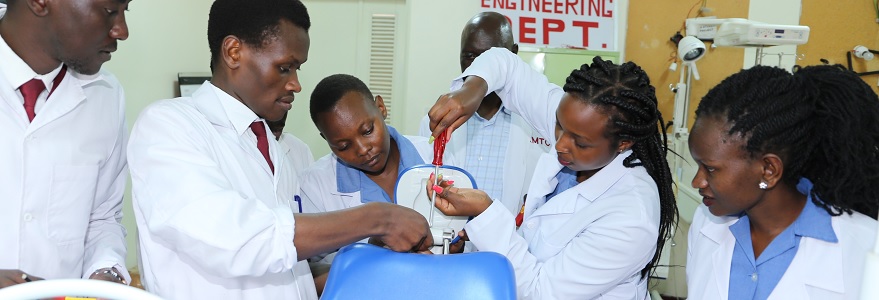- P.O. BOX 30195-00100, Nairobi, Kenya.
- admissions@kmtc.ac.ke : info@kmtc.ac.ke
- 020-2081823 / 0737352543
Welcome to our E-Learning Platform
Welcome to the KMTC E-Learning. If taking care of others’ health is your priority, if you are looking for an institution that will enable you improve the lives of others, then KMTC is the place you want to launch your career in the medical profession.
KMTC is 100% Government Training owned College, endowed with resources and strategically placed next to referral hospitals for students clinical training sites. Our students provide services to over 450 Hospitals and health centres, our training being hands-on, 70% practicals and 30% theory.
Read MoreThe ever-rising interest by Kenyans and international students to train with us demonstrates the trust bestowed on KMTC. In any health facility you go to in Kenya and even internationally, you will not miss to find a KMTC graduate or trainee. More than 85 percent of the Country’s mid-level healthcare workers are trained at the College.
Having rapidly grown from one course at inception in 1927 to 76 courses spread out in 18 departments today, KMTC’s contribution to health-care provision in Kenya is undoubtedly being felt in all corners of the world.
At KMTC, we offer a wide range of courses, from Certificate, Diploma to Higher Diploma.
This wide range courses reflects the institution’s responsiveness to the needs of our nation. The ever rising number of admissions show the trust bestowed on us by the public and the aspirations of our valued clients, the students.
The courses have continuously grown — from a handful to more than 70 currently — to meet the changing needs of the country’s health care system. The introduction of new courses is in line with the College’s strategy to keep abreast with market changes and the needs of the global community.



